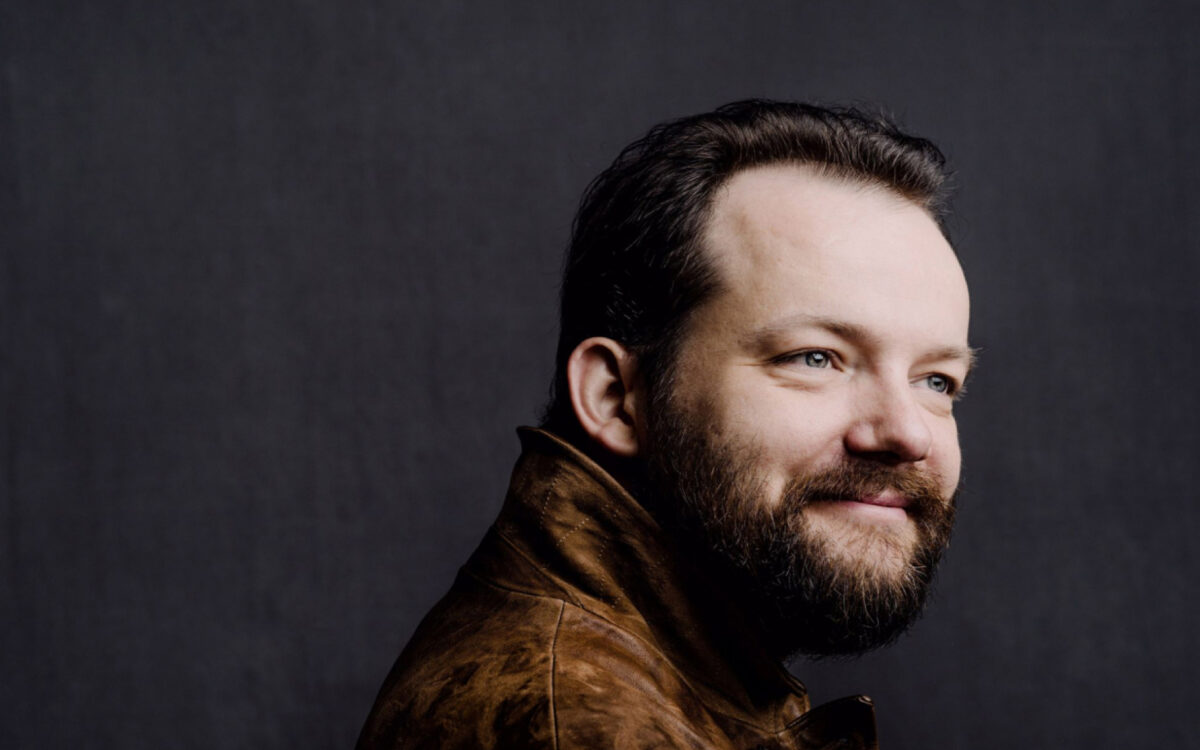Symphony No. 40
Joannes Chrisostomus Wolfgang Gottlieb Mozart, who began calling himself Wolfgango Amadeo around 1770 during his first trip to Italy and switched to Wolfgang Amadè in 1777 (but who never used Amadeus except in jest), was born in Salzburg, Austria, on January 27, 1756, and died in Vienna on December 5, 1791. His Symphony No. 40 was the second of his three last symphonies—No. 39 in E-flat, K.543; the present G minor symphony; and No. 41 in C, K.551, the Jupiter—all composed in the summer of 1788, perhaps for a series of subscription concerts for which we have no record. Mozart entered No. 40 into his own catalog on July 25, 1788. That date refers to Mozart’s original version. For the most frequently heard version of Symphony No. 40, Mozart added a pair of clarinets, probably for concerts in Vienna on April 16 and 17, 1790, conducted by Antonio Salieri.
Mozart’s Symphony No. 40 calls for an orchestra of flute, 2 oboes, 2 clarinets (though not, as noted above, in the original version), 2 bassoons, 2 horns, and strings (first and second violins, violas, cellos, and double basses). The symphony is about 30 minutes long.
Mozart reinforced the striking differences in mood within his last three symphonies—from mellow lyricism to darkly tragic grace to festive formality—with simple but significant differences in the instrumentation of the three pieces. In Symphony No. 39, he employed clarinets instead of oboes, whereas in No. 40 he preferred the sharper “bite” of the oboes but completely omitted trumpets and timpani, since their heroic gestures could play no role in so dark a work. Then in No. 41 he returned to the normal complement of brass, as in No. 39, while again including oboes rather than clarinets.
Following the summer of 1788, Mozart gave no more “academies” (as concerts were called). In fact, he almost totally gave up taking part in the concert life of Vienna, his sights now being set on other goals; only once more did he have occasion to write another concert piece for himself, the B-flat piano concerto, K.595, which he played in 1791. But his last symphonies, along with those of Haydn, highlight a miraculous decade of accomplishment between 1785 and 1795. Among the works that appeared in this period are Haydn’s six Paris symphonies (nos. 82-87; 1785-86), Mozart’s Prague Symphony (1786), the two symphonies Haydn wrote for Johann Tost (Nos. 88-89; 1788), Mozart’s last three symphonies (1788), Haydn’s symphonies for Count d’Ogny (Nos. 90-92; 1788-89), and the twelve that Haydn wrote for London (Nos. 93-104; 1791-95). After 1795, Haydn, too, left off composing symphonies, and the monument that was the Viennese classical symphony was fully established.
After finishing the E-flat symphony, K.543, on June 26, 1788, Mozart composed a few small pieces early in July: a little violin sonata in F “for beginners,” K.547, on July 10; a trio in C for piano, violin, and cello, K.548, on the 14th, and a vocal trio to an Italian text, K.549, on the 16th. But the main composition of the month, completed on the 25th, was the symphony destined to become Mozart’s most famous, the G minor (despite the fact that he had written an earlier symphony in this key more than a decade before).
The unrelieved “minorness” of the symphony, without even so much as a major-key coda at the very end, gives it a feeling of passionate violence that recommended the work to early 20th-century audiences, when so many of Mozart’s compositions were considered mere decorative playthings. But tastes and perceptions change. Astonishing as it may be to us, Robert Schumann failed to find any pathos in this symphony. The extravagant Romantic heights from which he viewed Mozart’s work had the effect of foreshortening the peaks and valleys of the earlier composer’s expression, with the result that Schumann was able to perceive only grace and charm. In any case, minor keys were a serious business to Mozart, and when he chose to end the work still in the minor, that was the most serious of all.
The slow movement is in the related major key of E-flat, but passing chromatic figures and a surprising turn of modulation show that it comes from the same expressive world as the first movement. The minuet, in G minor, is much too severe a piece to suggest dancing at all, but the Trio, in G major, provides a brief welcome respite. In the finale, Mozart avoids the complexities of phrasing that were characteristic of the opening movement since he wants to bring the work to a stable conclusion, even though he intends to remain steadfastly in the minor, which, to 18th-century ears, was less final than the major. But the balance in the phrase articulation brings effective closure to this symphony that ranks as richest in pathos of all forty-one, and to some minds richest of all Mozart’s works in any medium.
Steven Ledbetter
Steven Ledbetter, a freelance writer and lecturer on music, was program annotator of the Boston Symphony Orchestra from 1979 to 1998.
The first American performance of Mozart’s Symphony No. 40 was on April 25, 1846, with Henry C. Timm conducting the Philharmonic Society of New York at the Apollo Rooms. Using a manuscript copy of the score, George J. Webb led the Musical Fund Society in the first Boston performance on December 21, 1850, at the Tremont Temple.
The first BSO performance of Mozart’s Symphony No. 40 was given by Georg Henschel on November 5, 1881, early in the BSO’s first season.

